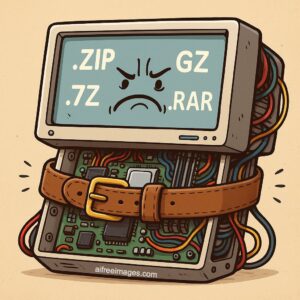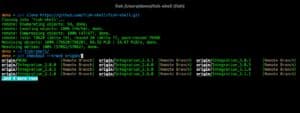In the rapidly evolving world of technology, change is an inevitable constant. While technological advancements bring improvements, they also introduce challenges, especially when dealing with operating systems that have reached their End of Life (EOL). EOL systems no longer receive critical security updates, making them highly vulnerable to cyber threats. Furthermore, they face compatibility issues and can increase legal and financial risks for organizations. This article explores the risks associated with using EOL operating systems and how to manage these challenges.
What is an End-of-Life Operating System?
Operating systems, like other types of software, have a defined lifespan. Vendors regularly release new versions that include new features and bug fixes. However, support for older versions eventually ceases when a system reaches its End of Life (EOL). At this point, the vendor stops providing official support, including security patches. As a result, users of EOL systems are exposed to significant security risks due to unpatched vulnerabilities.
Risks of Using an EOL Operating System
1. Security Risks
The most significant danger of using an EOL operating system is the lack of security updates. Without official patches, the software remains vulnerable to new threats and exploits. Cybercriminals often exploit known vulnerabilities in EOL systems. A notable example is the WannaCry ransomware attack in May 2017, which targeted organizations still using Windows XP, a system that had reached its EOL in 2014.
2. Compatibility and Performance Issues
EOL operating systems often struggle to run modern software and hardware, leading to compatibility problems. As technology evolves, outdated systems may experience reduced performance and productivity issues. The growing incompatibility with new technologies can affect an organization’s ability to remain competitive and efficient.
3. Legal and Financial Risks
Many data security regulations require companies to use software with official support to meet security standards. Using an EOL system can result in non-compliance, leading to financial penalties and operational restrictions. Additionally, maintaining an outdated system can be costly, and organizations may face significant expenses if a security breach occurs due to the use of unsupported software.
4. Reliability and Growing Costs
Reliability problems are common with EOL systems, as new software components and updates from vendors may not be compatible with the old system. This can lead to costly operational issues. Furthermore, maintaining an EOL system can be expensive, as customized solutions may be needed to address problems without vendor support. As time progresses, these costs can escalate.
How to Manage End-of-Life Operating Systems
1. Consider Upgrading or Migrating
The ideal solution is to upgrade to a newer version of the operating system that still receives support. Although migration can be costly and complex, it is a crucial investment for long-term security and compatibility. Organizations should carefully plan the transition to minimize operational disruptions.
2. Evaluate Extended Support Options
Some vendors offer extended support for EOL systems, allowing organizations to pay for continued support beyond the official end-of-life period. Extended support can provide security updates and critical fixes, offering a temporary solution while migration to a modern platform is completed.
3. Implement Additional Security Measures
If immediate upgrading is not feasible, organizations should implement additional security measures to protect EOL systems. This may include enhanced firewalls, intrusion detection systems, and improved security practices to mitigate risks associated with using outdated software.
4. Plan Migration Carefully
Careful planning is essential for any migration process. Organizations should assess their needs, inventory critical applications and systems, and develop a migration plan that minimizes impact on daily operations.
Conclusion
Using end-of-life operating systems poses significant risks that can impact security, compatibility, and legal compliance. While there may be valid reasons for retaining an EOL system, the associated risks often outweigh the benefits. Organizations should consider upgrading or migrating to a supported operating system and explore extended support options to protect against vulnerabilities and meet security regulations. Proactive management of these challenges is crucial for maintaining operational integrity and continuity.











